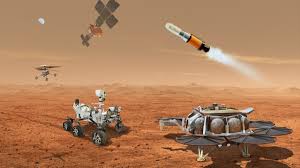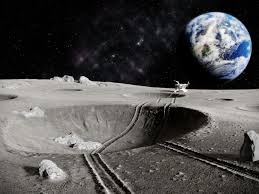NASA, the National Aeronautics and Space Administration, is an independent agency of the U.S. federal government responsible for the nation’s civilian space program and for aeronautics and aerospace research. It engages in research, technology innovation, and exploration of air and space, operating programs such as the International Space Station and a variety of space missions.
NASA, the National Aeronautics and Space Administration, was established on July 29, 1958, in response to the Soviet Union’s successful launch of the first artificial satellite, Sputnik, in 1957. The U.S. felt the need to enhance its space capabilities and preserve its position in the space race. https://www.nasa.gov/
Key Historical Milestones:
NASA in 1958-1961: Early Years and the Space Race
– NASA was created as part of the National Aeronautics and Space Act.
– The first major program was Explorer 1, which launched in January 1958 and discovered the Van Allen radiation belts.
NASA in 1961-1969: The Mercury and Gemini Programs
– Project Mercury (1958-1963) aimed to send humans into space. The first American in space, Alan Shepard, flew aboard Freedom 7 in 1961.
– Project Gemini (1962-1966) focused on developing techniques for space travel and included the first American spacewalk (EVA) by Ed White in 1965.
NASA in 1969: Apollo Program and Moon Landing
– NASA’s Apollo program achieved its most significant milestone when Apollo 11 landed Buzz Aldrin and Neil Armstrong on the Moon on July 20, 1969, making Armstrong the first human to set foot on the lunar surface.
NASA in 1970s: Skylab and Apollo-Soyuz
– Skylab, the first U.S. space station, was launched in 1973.
– The Apollo-Soyuz Test Project in 1975 marked the first international human spaceflight, where U.S. and Soviet spacecraft docked in orbit.
NASA in 1980s: Space Shuttle Program
– The Space Shuttle program began in 1981 with the launch of Columbia. The shuttle design allowed for reusable spacecraft, enabling regular missions to space, including satellite deployments and servicing.
- NASA in 1990s: Hubble Space Telescope and International Collaboration
– The Hubble Space Telescope was launched in 1990, greatly advancing our understanding of the universe.
– International collaborations began to grow, including partnerships with the European Space Agency and others.
- NASA in 2000s: International Space Station (ISS)
– Construction of the ISS began in 1998, leading to a long-term human presence in low Earth orbit with international cooperation from multiple space agencies.
- NASA in 2010s: Mars Exploration and New Horizons
– NASA launched several missions to Mars, including the Curiosity rover in 2012.
– The New Horizons spacecraft flew by Pluto in 2015, providing unprecedented images and data.
- NASA in 2020s: Artemis Program and Future Exploration
– NASA’s Artemis program aims to return humans to the Moon by the mid-2020s, with plans to eventually send astronauts to Mars.
– The Space Launch System (SLS) and the Orion spacecraft are central to these efforts.https://www.space.com/38700-nasa-history.html
NASA has several main missions that encompass a wide range of objectives in space exploration, scientific research, and aeronautics. Some key areas include: https://www.nasa.gov/

- Human Spaceflight: Programs like the Artemis missions aim to return humans to the Moon and eventually send astronauts to Mars. The International Space Station (ISS) serves as a platform for research and international collaboration.
- Robotic Exploration: NASA conducts missions to explore other planets and celestial bodies. Notable missions include the Mars rovers (like Curiosity and Perseverance), the Voyager spacecraft, and the New Horizons mission to Pluto.
- Earth Science: NASA studies Earth’s climate, atmosphere, and environmental changes through satellite missions. This research helps monitor global patterns and inform policy regarding climate change.
- Astrophysics: NASA explores the universe through telescopes and observatories, such as the Hubble Space Telescope and the James Webb Space Telescope, to understand the origins of stars, galaxies, and the universe itself.
- Aeronautics Research: NASA conducts advanced research to improve aviation technology, safety, and efficiency, including developing technologies for quieter and more fuel-efficient aircraft.
- Technology Development: NASA invests in new technologies to support its missions and improve space exploration capabilities, including advancements in propulsion, robotics, and materials science.
These missions collectively contribute to expanding our knowledge of space, advancing technology, and fostering international collaboration in scientific research.
NASA contributes to technological advancements in several ways:
- Research and Development: NASA conducts extensive research in various fields such as materials science, robotics, aerodynamics, and propulsion systems. Innovations developed during this research often have applications beyond space exploration.
- Technology Transfer: NASA actively shares its technologies with private industries. This includes licensing patents and sharing data, which can lead to commercial products and enhancements in various sectors, including telecommunications, healthcare, and transportation.
- Collaboration with Industry: NASA collaborates with private companies and other organizations through partnerships and contracts, fostering innovation in aerospace technologies. This collaboration often leads to new solutions and advancements in engineering practices.
- STEM Education and Outreach: NASA supports educational initiatives in science, technology, engineering, and mathematics (STEM) to inspire and cultivate the next generation of engineers and scientists, thus ensuring a continuous flow of talent into technology fields.
- Open Source Projects: NASA has made numerous technologies and software available as open-source. This encourages the global community to use and improve upon NASA-developed technologies.
- Success Stories: Technologies developed for space missions, such as advanced materials, medical devices (like the cardiac pump), and environmental sensing technologies, have been adapted for use on Earth, benefitting various industries.
- Innovative Solutions for Unique Challenges: The challenges of space travel, such as life support systems, energy management, and navigation, drive innovation that can be applied to problems on Earth.
Conclusion:
Overall, NASA’s investment in cutting-edge research and its focus on solving complex problems help spark technological advancements that benefit not only space exploration but also everyday life on Earth.
Since its inception, NASA has played a crucial role in the exploration of space, scientific discovery, and technological innovation, continually shaping our understanding of the universe and advancing human capabilities in aeronautics and spaceflight.
